Please note: As an Amazon Associate I earn from qualifying purchases. I also work with other affiliate partners and may be compensated from the links below. Details here.
7 Best Canon APS-C Lenses: My Top Picks for Crop Sensor Cameras (2025)
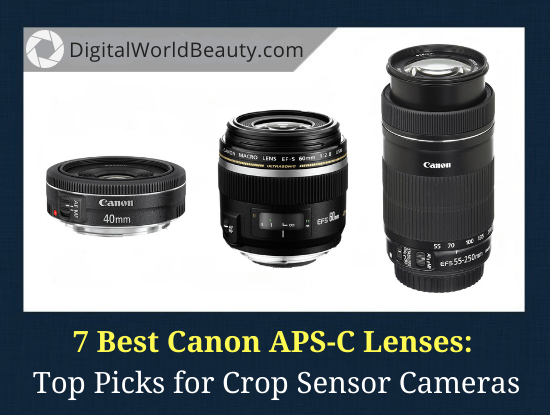
Look:
If you are a Canoner and ready to upgrade your gear then this article is for you. Specifically, I’ll cover the best Canon APS-C lenses for 2025.
You might know that Canon uses 2 sensor sizes: full-frame and APS-C (crop).
In this list, however, you will see the best APS-C lenses for Canon specifically for crop sensor DSLRs.
Note that the list includes both EF and EF-S because you can use both types on a crop camera (but you can’t use EF-S on a full frame body).
When choosing which product to include, I didn’t focus on the ‘latest and the greatest’, but rather on great price-quality ratio options, and clarified which genre it’s to be used for.
Best Lenses for Canon APS-C DSLRs 2025
Here’s a table that’ll give you a quick look of my roundup and the reasons to buy the product. For further details, simply click ‘review>’ in respective row.
Product | Image | Reasons to Get It | |
1. EF-S 17-55mm Best walk around lens for Canon |
| ||
2. EF-S 10-18mm Affordable ultra wide angle zoom |
| ||
3. EF-S 55-250 Best cheap telephoto lens |
| ||
4. EF 85mm f/1.8 Best telephoto prime for the buck |
| ||
5. EF 50mm f/1.8 Great cheap prime lens for beginners |
| ||
6. EF-S 60mm Best macro lens for Canon crop sensor |
| ||
7. EF-S 24mm Sweet all around "pancake" prime |
|
Whether you’re a complete newbie or an enthusiast, bootstrapped or not, you’ll find a good option from these Canon APSC lenses that works best for your needs and budget.
Let’s get started, shall we?
1. Canon EF-S 17-55mm f/2.8 IS USM
Best Walk-Around Lens for Canon APS-C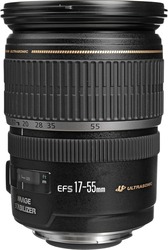
- Type: Zoom
- Weight: 645 g (1.42 lb)
- Compatible format: APS-C
- Autofocus: Yes
- Image stabilization: Yes
- Is it weather-sealed: No
- Zoom method: Rotary (extended)
- Good for: Portraits/travel
If you’re looking for the best walk around lens for APS-C Canon DSLRs, then consider the EF-S 17-55mm f/2.8 IS USM.
It is a high-quality, high-aperture zoom which is a great replacement for your 18-55mm kit lens and stands out among Canon crop lenses for its exceptional performance.
Thanks to its image stabilization (IS) and f/2.8 aperture you can enjoy shooting in rather low-light conditions, and get detailed images with a sweet bokeh.
Some would argue that it didn’t become the L-type only because it doesn’t work on full-frame sensors and it isn’t sealed.
Yep, it’s that good.
Now, let’s have a quick look at what you might like/dislike about this product.
Reasons to buy:
- great sharpness
- nice background blur
- very effective image stabilizer
- wide, constant-over-the-zoom-range
- mild vignetting (also known as “light fall-off”)
- fast and silent autofocus (thanks to its ultrasonic motor)
Reasons to avoid:
- not a good AF for video
- no dust or moisture protection
- costs more than most entry-level bodies
Bottom Line: A Great Alternative to Your Kit
If you want to improve the quality of your images, give 17-55mm a try.
In most cases, a crop sensor camera with this particular glass will work as well as full-frame one, with its ability to shoot in low light and get a nice bokeh.
I’ll say more…
The 17-55mm f/2.8 IS USM is arguably one of the best walk around lens for Canon APS-C sensor DSLRs today.
2. Canon EF-S 10-18mm f/4.5-5.6 IS STM
Best Canon Ultra Wide Angle Lens
- Type: Wide angle zoom
- Weight: 240 g (0.53 lb)
- Compatible format: APS-C
- Autofocus: Yes
- Image stabilization: Yes
- Is it sealed: No
- Zoom method: Rotary (internal)
- Good for: Real estate/landscapes
I’ll say this…
With this beauty, you’ll forget about typical problems of shooting in cramped conditions.
Even if it’s a small room, thanks to its maximum 97°10′ angle of view horizontally, you won’t have to back up far enough to include everything you want in the image.
(As you would with a normal lens).
That’s why it’ll be great choice for real estate, architecture and landscape photography. You could say, it’s the best wide angle lens for Canon APS-C.
Another little bonus:
10-18mm has a smooth and silent stepper motor autofocus (STM), which is especially valuable for those who like to shoot videos too.
Reasons to buy:
- small and light
- best price/quality ratio
- minimum focus distance = 22 cm (8.66″)
- excellent sharpness when wide open (large aperture)
Reasons to avoid:
- barrel distortion
- its plastic construction
- flares very easily when photographing light sources
Bottom Line: Best Affordable Ultra Wide Angle Zoom
Its image quality, edge-to-edge sharpness and autofocus accuracy are a very strong competing advantage over its currently available counterparts of this class.
If you…
- like to shoot not only photos, but also videos,
- looking for a reliable friend during your travel adventures,
- or simply need a great ultra wide-angle zoom,
… then Canon EF-S 10-18mm f/4.5-5.6 IS STM is your best bet.
3. Canon EF-S 55-250mm f/4-5.6 IS STM
Best Budget Telephoto Lens for Canon
- Type: Telephoto zoom
- Weight: 375 g (0.83 lb)
- Compatible format: APS-C
- Autofocus: Yes
- Image stabilization: Yes (4 stops)
- Is it sealed: No
- Zoom method: Rotary (extending)
- Good for: Wildlife/travel/portraits
A lot of people would recommend a nifty-fifty to get after your kit lens (and for good reason).
However, the 50mm doesn’t add to your available focal length range.
So…
If you need to cover a wide range of focal lengths and are on a tight budget, the Canon EF-S 55-250mm is the best telephoto lens for crop sensor cameras to complement your kit.
It gets better:
Just like with the 10-18mm we saw earlier, this one also has a silent and smooth STM, and that allows you to use it effectively not only for stills but also for video shooting.
Reasons to buy:
- lightweight
- effective stabilizer
- snappy and precise autofocus
- versatile, works great for most shooting situations
- image quality is on par with the semi-professional grade glass
Reasons to avoid
- plastic barrel/mount
- not ideal for low light photography
Bottom Line: By Far the Best Bang for Your Buck
Truth is…
The Canon EF-S 55-250mm is a must have for beginner photographers.
While it’s not the fastest one, it’s one that will likely fit your budget and will offer high image quality and a great zoom range.
(Even its plastic construction isn’t a major problem for many people.)
Without a doubt, with the features that you get, this telephoto zoom is by far the best bang for your buck.
Note: When buying, make sure it’s the IS STM version!
4. Canon EF 85mm f/1.8 USM
Best Telephoto Prime for the Money
- Type: Telephoto prime
- Weight: 425 g (0.94 lb)
- Compatible format: APS-C/FX
- Autofocus: Yes
- Image stabilization: No
- Is it sealed: No
- Good for: Portraits/product photography
Look…
Even though 85mm f/1.8 has a significantly lower price compared to the top models, it’s still a classic portrait glass with a very nice image quality and soft bokeh.
In fact, it’s an amazing Canon prime lens for portraits.
This one is also a telephoto lens, but it’s a prime one, meaning that the focal length is fixed.
Also, thanks to its light weight and the presence of an ultrasonic focusing motor, it focuses very quickly and accurately.
(Some even argue that it’s better than the 85mm f/1.2 option. See the reviews.)
Note:
You’ll notice that this is an EF mount and that’s OK. It will be compatible with your APS-C sensor Canon DSLR.
You can’t use EF-S lenses on a full frame but you can use EF lenses on crop sensor cameras.
Reasons to buy:
- mild vignetting
- extreme sharpness
- great price/quality ratio
- small size and low weight
Reasons to avoid:
- not for general shooting
- it’s possible for AF to miss at aperture f/1.8
- chromatic aberrations (easily fixable in Photoshop though)
Bottom Line: 85mm f/1.8 is Canon’s Hidden Gem
Seriously, you get a lot for the money.
If you need…
- fast autofocus,
- balanced contrast,
- sharp depth of field,
… then this is your go-to lens.
Without a doubt:
The 85mm f/1.8 is the best prime lens for crop sensor portrait shots, for beginner and advanced photographers alike.
5. Canon EF 50mm f/1.8 STM
Best Cheap Prime Lens for Canon
- Type: Prime
- Weight: 425 g (0.94 lb)
- Compatible format: APS-C/FX
- Autofocus: Yes
- Image stabilization: No
- Is it sealed: No
- Good for: Portraits/product photography
You know…
When it comes to primes, I call the 50mm f/1.4 “the king of all lenses” and the 50mm f/1.8 “the prince of all lenses”.
For some people the 50mm f/1.4 is a bit pricey, so if you’re on a tighter budget, then absolutely go for f/1.8! This one will blow you away.
One of the biggest upgrade points from the old version was the inclusion of STM aka stepper motor, which made its autofocus even better. Like most Canon lenses, this one is fast and accurate.
(And now it’s quiet too.)
Also, thanks to its wide aperture, you can also improve the quality of photography in low light conditions.
Note:
On an APS-C sensor body, this nifty-fifty will make the field of view a bit narrow but in no way does it interfere with your creativeness. (And if you ever get a full frame DSLR, it will be simply outstanding.)
Reasons to buy:
- light and compact
- wide aperture and shallow DOF
- massive upgrade from the old version
- one of the most affordable Canon products
Reasons to avoid:
- hood isn’t supplied
- reaches its full potential with a FX camera
Bottom Line: This Prime Will Exceed Your Expectations
I’ll be honest:
This is the best prime lens for those starting out.
I mean… It is sharp, lightweight, compact, inexpensive and works in low light conditions. What else can we ask for?
Truth is, every photographer must have at least one prime in his collection. And this nifty-fifty is a no-brainer.
Don’t believe me?
6. Canon EF-S 60mm f/2.8 Macro USM
Best Budget Canon Macro Lens
- Type: Telephoto macro prime
- Weight: 335 g (0.74 lb)
- Compatible format: APS-C
- Autofocus: Yes
- Image stabilization: No
- Is it sealed: No
- Good for: Macro/food/full body portraits
Now…
While the 50mm f/1.8 could work for macro shots, if you are truly into macro photography have a look at Canon EF-S 60mm f/2.8.
In fact, because it features the 1:1 magnification ratio, it’s a true macro lens.
(Some manufacturers just slap “macro” text on their products for marketing purposes.)
For what it’s worth, having 1:1 ratio means that the image on the sensor is the same as that of the object being photographed.
In terms of image quality, it’s great. I mean the level of sharpness and color rendition that you see with this glass is on par with the L-series glass.
You won’t be disappointed.
Reasons to buy:
- great price/quality ratio
- quick focusing for a macro lens
- works pretty well for general use
- high contrast and excellent sharpness
- wide aperture = good low light photos
- great for food and product photography, as well as full-body style portraits
Reasons to avoid:
- the focal length is a bit tight for indoor use
- can be used on Canon APS-C (crop) sensor DSLRs only
Bottom Line: A Great Choice for Macro Work (And More)
Don’t want to sound like a broken record but the main advantage of this glass is its highest level of sharpness and excellent contrast, which is not lost even when shooting with backlight.
It is also pretty versatile and with its focal length you take people shots, landscapes, food and product photos.
Truth is…
If you’re a macro photography enthusiast, then 60mm f/2.8 is one of the best 1:1 “one-size” macro lenses for crop sensor Canon today.
7. Canon EF-S 24mm f/2.8 STM
Best Prime Lens for Canon APS-C
- Type: Prime
- Weight: 125 g (0.28 lb)
- Compatible format: APS-C
- Autofocus: Yes
- Image stabilization: No
- Is it sealed: No
- Good for: Street/travel/landscapes
Usually entry-level DSLRs come with zoom kit lenses, which you can’t really put in your pocket and carry around.
Let’s face it:
Bulky camera gear is too bothersome to take with you everywhere, especially when you’re backpacking, travelling or simply having outdoors adventures.
And this is where inexpensive 24mm f/2.8 “pancake” comes in.
With it your crop sensor DSLR will pretty much become a compact camera with killer capabilities.
First of all, it’s sharp. Second, it’s got great macro capabilities. Lastly, it’s wide so you can really capture the scenery.
The list goes on and on.
There’s pretty much no downside to having this glass.
Reasons to buy:
- under $200
- extremely sharp
- super small and light (uh.., duh)
- decent amount of background blur
- its build quality will last a long time
Reasons to avoid:
- no image stabilization
- can be used on Canon’s crop sensor cameras only
Bottom Line: Sweet “Pancake” for All Around Shooting
Honestly, the 24mm f/2.8 is one of the best prime lenses for a crop sensor to invest in.
I mean, this pancake is:
- sharp and fast,
- works in low light,
- great for street photos, landscapes, general all around photography,
… just to name a few.
Really, with this baby you’ll just want to keep shooting. Everything you can, anywhere you are.
Best Canon Crop Sensor Lenses in 2025
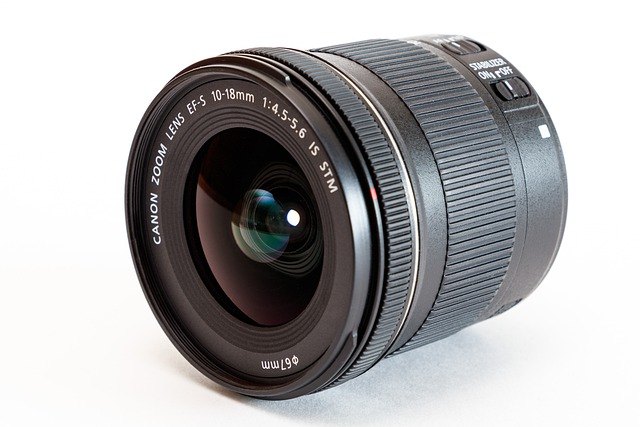
So…
If you’re looking for the best lens for crop sensor Canon (EF-S and EF), this list offers 7 must-haves, including telephoto, wide angle, standard zoom, macro and tilt/shift – with mini reviews of each.
Whether you’re looking for the top rated options for portraits, wildlife or landscapes, you’ll find one that suits you best.
(Also, I will likely update this post by adding the buying guide for beginners.)
Let’s recap:
7 Best Canon Lenses for Crop Sensor (2025)
- 17-55mm – Best walk around lens for crop sensor Canon DSLRs.
- 10-18mm – Affordable ultra wide angle zoom (landscapes and real estate).
- 55-250mm – Best budget telephoto to complement your kit lens today.
- 85 mm f/1.8 – Amazing telephoto prime lens for APS-C Canon.
- 50mm f/1.8 – Best prime for beginners (for product and portrait shots).
- 60mm – Great 1:1 “one-size” macro for Canon crop sensor in 2025.
- 24mm – One of the best Canon DSLR prime lenses (for street, travel, landscapes).
Of course, there are a LOT of great options out there, but I wanted to keep this post concise and offer the ones that have the best price-quality ratio.
If you’re a more experienced photographer, feel free to share your best suggestions in the comments!
Later, I will publish a post on the best lenses for the full-frame Canon cameras.
Now, I’d like to hear from YOU:
- Do you own a crop or full-frame Canon camera right now?
- What is your main photography genre?
- Your thoughts on this list of best APS-C lenses for Canon DSLRs in 2025?
Any questions? Suggestions? Recommendations?
Let me know in the comments below!
Sharing is caring!
About Author
Zarina
Founder & content creator at Digital World Beauty. My main objective here is to create a valuable resource for photography enthusiasts with honest tech reviews, course recommendations, and how-to tutorials.








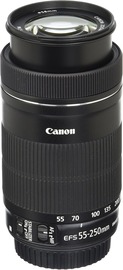

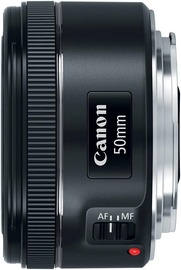

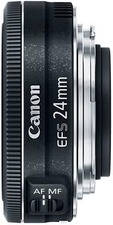
Wow – what a very informative article! I am brand new to manual camera photography with a canon. Typically I use my smartphone and them edit with Adobe light room. It produces beautiful pictures but I would love to take photographer level images. I will admit this was a bit of information overload for a newbie! I mainly want to do nature photography. Is there a canon camera and an attachment lens you’d recommend? Thank you for your help!
Hi Sherry,
Lately a lot of people feel like they want to get into more “professional” level of photography. Luckily, there are a lot of great options on the market for every skill level and every budget.
And I understand, this article is lengthy, but I thought I’d rather answer all possible questions that people might have than dividing into two smaller and less quality posts.
To answer your question:
Nature photography can include photographing insects (macro), landscapes or wildlife. I feel you might be talking about landscape photography, if that’s the case, refer to my list of top cameras AND lenses here.
Let me know if you have any further questions!
I have the Canon EF-S 55-250mm and have to say on a budget it gets the job done. I originally choose it to go to an airshow as I wanted to get some flying shots and found it to take really amazing images. I did have to play around with the settings at first as the bright light overexposed the images but once I got it sorted the shots from then on were clear and precise.
I also love it for macro shots of flowers and wildlife that is nearby. Without having to get close you can really get into a flower center especially handy when there is a bee in there you don’t want to scare off.
Hi Mark,
Without a doubt, the 50-250mm is a great budget telephoto lens and a great choice for beginner photographers.
Yeah, I remember you commenting on some other post about the airshow events – good to hear you got your camera settings sorted! Photography definitely takes practice and time but it’s also rewarding.
Out of curiosity…
Does the plastic barrel/construction annoy you, or is it bearable? I mean I personally think it’s not THAT big of a deal for most people, but a few still would complain about it.
Cheers!
Zarina, I actually prefer the plastic lens as its much lighter to carry around. It’s that nicely finished you don’t really notice that it is made from plastic.
For me, having two small boys who are learning how to take photographs the lighter weight of the camera and lens makes it easier for them to hold and take shots. On top of this, the lens takes some really nice shots and as we are amateur photographers it comes at a nice budget price that we can live with.
I can recommend it for anyone on a small budget looking to take some distance shots.
Hey Mark, thanks so much for your input! Totally makes sense.
I agree. The quality, light weight and a nice price tag for value definitely are good reasons for amateur photographers on a budget to add this lens to their selection!
Thanks for confirming it was a smart move to add the 50-250mm to this list 🙂